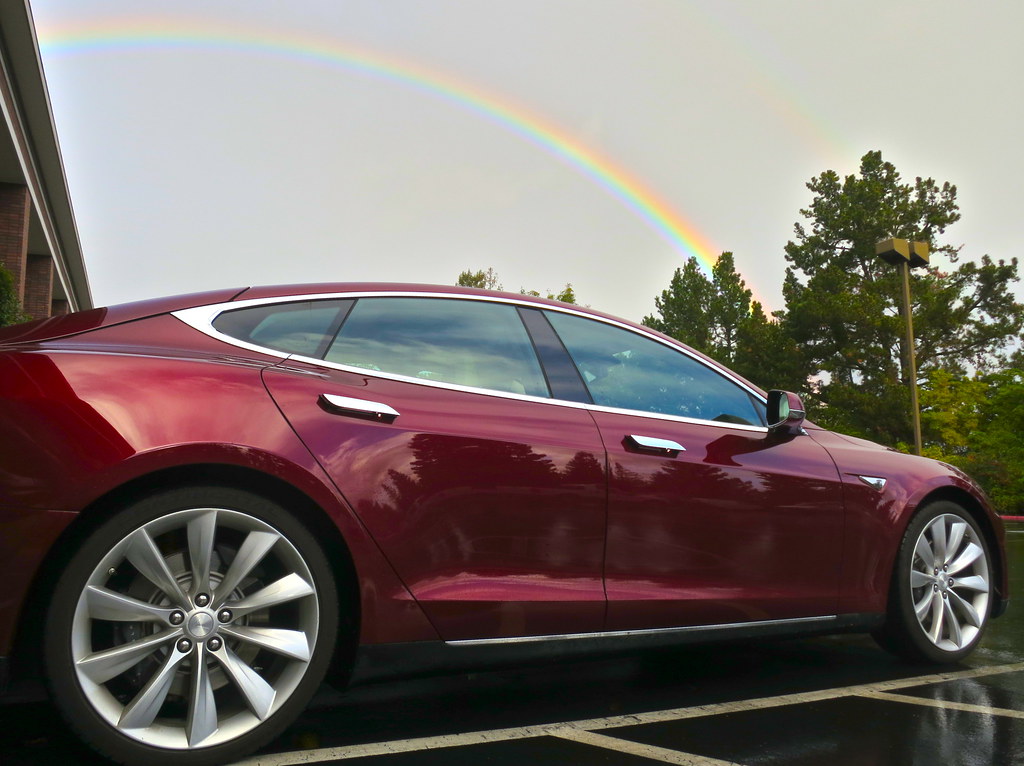
Every year, automakers roll out a fresh array of models, each accompanied by enthusiastic promises about groundbreaking performance, cutting-edge technology, unparalleled comfort, or superior fuel economy. These launches ignite excitement, tempting consumers with the allure of a brand-new driving experience. However, the reality often falls short of the hype, leaving many buyers and critics underwhelmed once these vehicles hit the road and undergo rigorous scrutiny.
In the competitive automotive landscape of 2025, numerous vehicles have failed to live up to these ambitious expectations. Our extensive analysis, drawing from detailed reviews, early owner feedback, and reliability scores from reputable sources like Consumer Reports and J.D. Power, reveals a clear pattern: some new cars simply don’t deliver on their fundamental pledges. From inconsistent build quality and lackluster driving dynamics to significant reliability concerns and outdated features, these models represent substantial pitfalls for the unsuspecting buyer.
This in-depth guide is designed to empower you with critical, data-driven insights into the new cars of 2025 that you might be wise to avoid. Our objective is to highlight the specific issues that make these vehicles less-than-ideal choices, helping you navigate the complex market and make informed purchasing decisions that protect your investment and ensure your satisfaction. We delve into the precise reasons why these models missed the mark, ensuring you have all the facts before committing to a costly mistake.
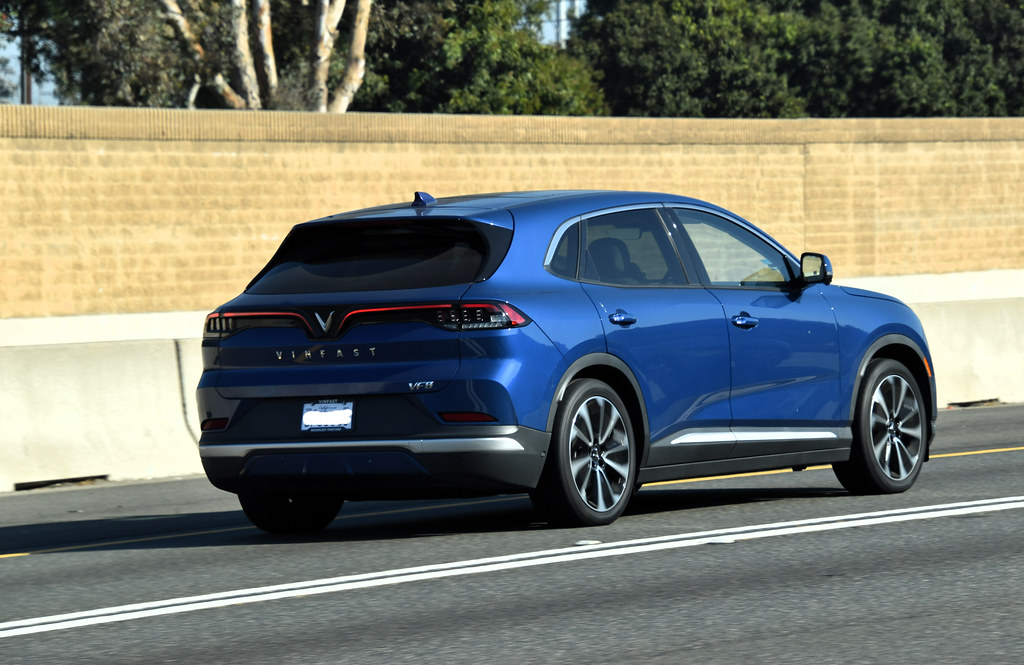
1. **VinFast VF 8**
The VinFast VF 8 was introduced with the ambitious goal of becoming a formidable competitor in the burgeoning electric SUV segment. However, initial reviews and early owner experiences have painted a picture of significant disappointment. A primary concern cited by critics is the alarming inconsistency in performance observed from one vehicle to another, suggesting a lack of uniform quality control across the production line.
Further compounding these issues are widespread reports of sloppy build quality, which can manifest in various fit-and-finish problems. Drivers have also pointed to a weak steering feel, diminishing the sense of connection to the road and making for a less engaging driving experience. The suspension system, intended to provide comfort, has been criticized for its inability to effectively absorb bumps, leading to a less smooth and more jarring ride than expected in its class.
Considering its price point, where established rivals consistently offer superior ride comfort and meticulously crafted interiors, the VF 8 appears to be a product still undergoing development. It lacks the polish and refinement that consumers expect from a vehicle ready for mass market adoption. This makes it a questionable choice for buyers seeking a reliable and well-sorted electric SUV.
Car Model Information: 2023 Hyundai PALISADE Calligraphy
Name: VinFast VF 8
Caption: VF 8 2025 in Stuttgart-Vaihingen
Manufacturer: VinFast
Production: 2022–present
ModelYears: 2023–present
Assembly: ubl
Designer: Pininfarina
Class: Mid-size crossover SUV
BodyStyle: Sport utility vehicle
Layout: ubl
Motor: Permanent magnet motor
Powerout: ubl
Wheelbase: 2950 mm
Abbr: on
Length: 4750 mm
Width: 1900 mm
Height: 1660 mm
Predecessor: VinFast LUX SA2.0
Sp: us
Battery: val,Samsung SDI
Categories: All-wheel-drive vehicles, All Wikipedia articles in need of updating, All Wikipedia articles written in British English, Articles with short description, Battery electric vehicles
Summary: The VinFast VF 8 is a battery electric mid-size crossover SUV (D-segment) manufactured and marketed by VinFast of Vingroup from 2022. The model made its debut in the second half of January 2022, as one of the product to support the automakers planned expansion to global markets.
Get more information about: VinFast VF 8
Buying a high-performing used car >>>
Brand: VinFast Model: VF 8
Price: $32,135 Mileage: 69,109 mi.
Read more about: Navigating the Automotive Market: 12 Best and Worst Vehicles for Your Money in 2024-2025

2. **Subaru Forester Hybrid**
Long-time Subaru enthusiasts often appreciate the brand’s rugged styling and dependable all-wheel-drive capabilities, both of which the new hybrid Forester retains. However, the introduction of its hybrid system in the 2025 model has proven to be a significant source of disappointment. Many owners and reviewers feel that the hybrid integration is so mild as to be barely noticeable in real-world driving conditions.
The minimal fuel economy gains achieved by this system are a major point of contention. Buyers considering a hybrid typically expect a substantial improvement in efficiency, yet the Forester Hybrid delivers only marginal enhancements. Furthermore, the electric assist feature, a core component of any hybrid, reportedly kicks in only under very light loads or at extremely slow speeds, limiting its practical utility in diverse driving scenarios.
Consequently, the vehicle carries the inherent weight and complexity associated with hybrid technology without delivering the major savings or performance uplift that many buyers anticipate. This compromises its value proposition, as consumers are left with a vehicle that embodies the downsides of hybrid systems—added complexity and potentially higher maintenance—without fully realizing the expected benefits in efficiency or power.
Car Model Information: 2025 Subaru Forester Limited
Name: Subaru Forester
Manufacturer: Subaru
Production: 1997–present
Class: Compact crossover SUV
BodyStyle: SUV
Related: Subaru Impreza
Layout: Front-engine, all-wheel drive
Predecessor: Subaru Bighorn
Categories: 2000s cars, 2010s cars, All-wheel-drive vehicles, All Wikipedia articles written in American English, All articles containing potentially dated statements
Summary: The Subaru Forester (Japanese: スバル・フォレスター, Hepburn: Subaru Foresutā) is a compact crossover SUV that has been manufactured by Subaru since 1997. The first generation was built on the platform of the Impreza in the style of a taller station wagon, a style that continued to the second generation, while the third-generation model onwards moved towards a crossover SUV design. A performance model was available for the second-generation Forester in Japan as the Forester STi.
Get more information about: Subaru Forester
Buying a high-performing used car >>>
Brand: Subaru Model: Forester
Price: $35,995 Mileage: 3,866 mi.
Read more about: The Enduring Dozen: 12 Utility Vehicles Built to Conquer 220,000+ Miles and Beyond

3. **Renault Clio (New Redesign)**
The 2025 redesign of the Renault Clio generated considerable disappointment, primarily because it diverged significantly from the characteristics and appeal that prior Clio models had cultivated among their loyal fanbase. The new aesthetic has been described as derivative, appearing to blend design cues borrowed from various other brands rather than forging a distinctive identity of its own.
While the updated Clio does introduce new powertrain options, including hybrid and LPG variants, critics argue that these additions do not compensate for a perceived lack of character and emotional appeal in the overall package. The essence of what made previous Clios special, their unique charm and distinct personality, seems to have been diminished or lost in this redesign.
Specific criticisms have been leveled at the design changes, the quality of interior materials, and various interior touches, all of which have been generically described as uninspired. In markets where the Clio traditionally boasts a strong identity and a passionate following, many buyers feel that the brand has sacrificed too much of its heritage in pursuit of a new direction, resulting in a less compelling offering.

4. **Infiniti QX50 and QX55**
The Infiniti QX50 and QX55 crossovers initially garnered positive attention for their stylish exteriors and premium branding. However, consumer satisfaction began to wane significantly once owners and reviewers realized that the vehicles’ actual performance and refinement did not adequately justify their luxury price tags. This disconnect between expectation and reality became a critical flaw for both models.
Specifically, the QX50 has been critiqued for its engine, which many describe as coarse and lacking the smooth, refined power delivery expected from a luxury vehicle. This engine characteristic directly undermines the premium driving experience Infiniti aims to provide. The QX55, while lauded for its appealing coupe-like styling, underwhelms considerably in terms of driving dynamics and fuel efficiency, both key metrics for modern luxury crossovers.
The market’s response to these shortcomings appears to have been decisive, with both models slated for discontinuation by the end of 2025 in numerous markets. This suggests that they ultimately failed to carve out a compelling niche in a highly competitive segment. They stand as examples of models that effectively overpromised on luxury and performance but consistently underdelivered in practice, leading to their premature exit.
Car Model Information: 2020 INFINITI QX50 Luxe
Name: Infiniti QX50
Caption: Infiniti QX50 (J55)
Manufacturer: Nissan
Aka: unbulleted list
Production: unbulleted list
Class: Compact executive car,Crossover (automobile)
BodyStyle: SUV
Layout: unbulleted list
Categories: 2020s cars, All-wheel-drive vehicles, All articles with unsourced statements, Articles with short description, Articles with unsourced statements from September 2025
Summary: The Infiniti QX50, formerly the Infiniti EX until 2013, is a crossover SUV marketed by Infiniti, Nissan’s luxury division between 2007 and 2025. It was produced over two generations: one generation under both EX and QX50 nameplates, and the second generation under the QX50 nameplate. The first generation model was also marketed as the Nissan Skyline Crossover in Japan.
The first generation QX50 was a minor model update of the EX with its nameplate changed to QX50 to align with the marque’s new Q and QX nomenclature introduced for model year 2013 (China) and model year 2015 (United States). The second-generation QX50 entered production in November 2017 as a 2019 model.
Get more information about: Infiniti QX50
Buying a high-performing used car >>>
Brand: Infiniti Model: QX50
Price: $21,950 Mileage: 69,041 mi.
Read more about: Behind the Badges: Uncovering the Shared DNA of 10 Automotive Icons Built in the Same Factories

5. **Jeep Wrangler (2025 Model)**
The Jeep Wrangler, an undeniably iconic model known for its rugged capability and adventurous spirit, has nevertheless disappointed a segment of its loyal buyer base with its 2025 iteration. A primary point of contention is the vehicle’s increased price and complexity, which, according to critics, have not been matched by equivalent improvements in ride refinement. This means buyers are paying more for a vehicle that doesn’t necessarily offer a more comfortable or polished on-road experience.
The integration of numerous new tech features, while seemingly appealing, has introduced additional weight and, crucially, more potential points of failure. This raises concerns about long-term reliability and maintenance costs for a vehicle that is often pushed to its limits. Furthermore, some owners have expressed frustration over the 2025 Wrangler’s fuel efficiency, which continues to lag behind that of its competitors, impacting running costs.
Adding to the list of grievances, certain driver-assist systems in the 2025 Wrangler have been described as lacking polish, giving the impression that they were merely tacked on rather than fully integrated into the vehicle’s design. Consumer Reports provides a clear warning, assigning the Wrangler a reliability score of just 27 out of 100. Key trouble spots identified include the steering/suspension, electric system, engine, and drive system, indicating significant areas of potential concern for prospective owners.

6. **Volkswagen Jetta (2025 Model)**
The 2025 Volkswagen Jetta has faced criticism for perceived deficiencies in its cabin quality and technological offerings relative to its price point. In an automotive segment where rivals are consistently elevating standards for interior design, infotainment systems, and advanced safety features, the Jetta’s updates have been widely regarded by reviewers as minor and insufficient to keep pace.
This stagnant approach has left the Jetta feeling somewhat behind its competitors, rather than an innovator pushing forward. The expectations for sedans in this class are continuously rising, with consumers demanding more sophisticated interiors and comprehensive tech suites for their money. Unfortunately, the Jetta’s latest refresh has largely failed to meet these evolving benchmarks.
Furthermore, independent analysis reinforces these concerns. Consumer Reports rated the Jetta with a reliability score of only 25 out of 100, highlighting several significant trouble spots. These include issues with the brakes, electrical accessories, climate system, and in-car electronics, all of which are crucial components for both safety and daily driving satisfaction. These findings underscore the practical risks of choosing the 2025 Jetta, suggesting that buyers may find better value and reliability elsewhere.
Car Model Information: 2011 Volkswagen Jetta S
Name: Volkswagen Jetta
Production: 1979–present
Class: Compact car
Sp: uk
Categories: 1980s cars, 1990s cars, 2000s cars, 2010s cars, All-wheel-drive vehicles
Summary: The Volkswagen Jetta () is a compact car/small family car manufactured and marketed by Volkswagen since 1979. Positioned to fill a sedan niche slightly above the firm’s Golf hatchback, it has been marketed over seven generations, variously as the Atlantic, Vento, Bora, City Jetta, Jetta City, GLI, Jetta, Clasico, and Sagitar (in China).
The Jetta has been offered in two- and four-door saloon / sedan and sometimes as five-door wagon / estate versions. Since the original version in 1980, the car has grown in size and power with each generation. By mid-2011, almost 10 million Jettas have been produced and sold all over the world. As of April 2014, Volkswagen marketed over 14 million, becoming its top selling model.
Get more information about: Volkswagen Jetta
Buying a high-performing used car >>>
Brand: Volkswagen Model: Jetta
Price: $7,545 Mileage: 105,739 mi.
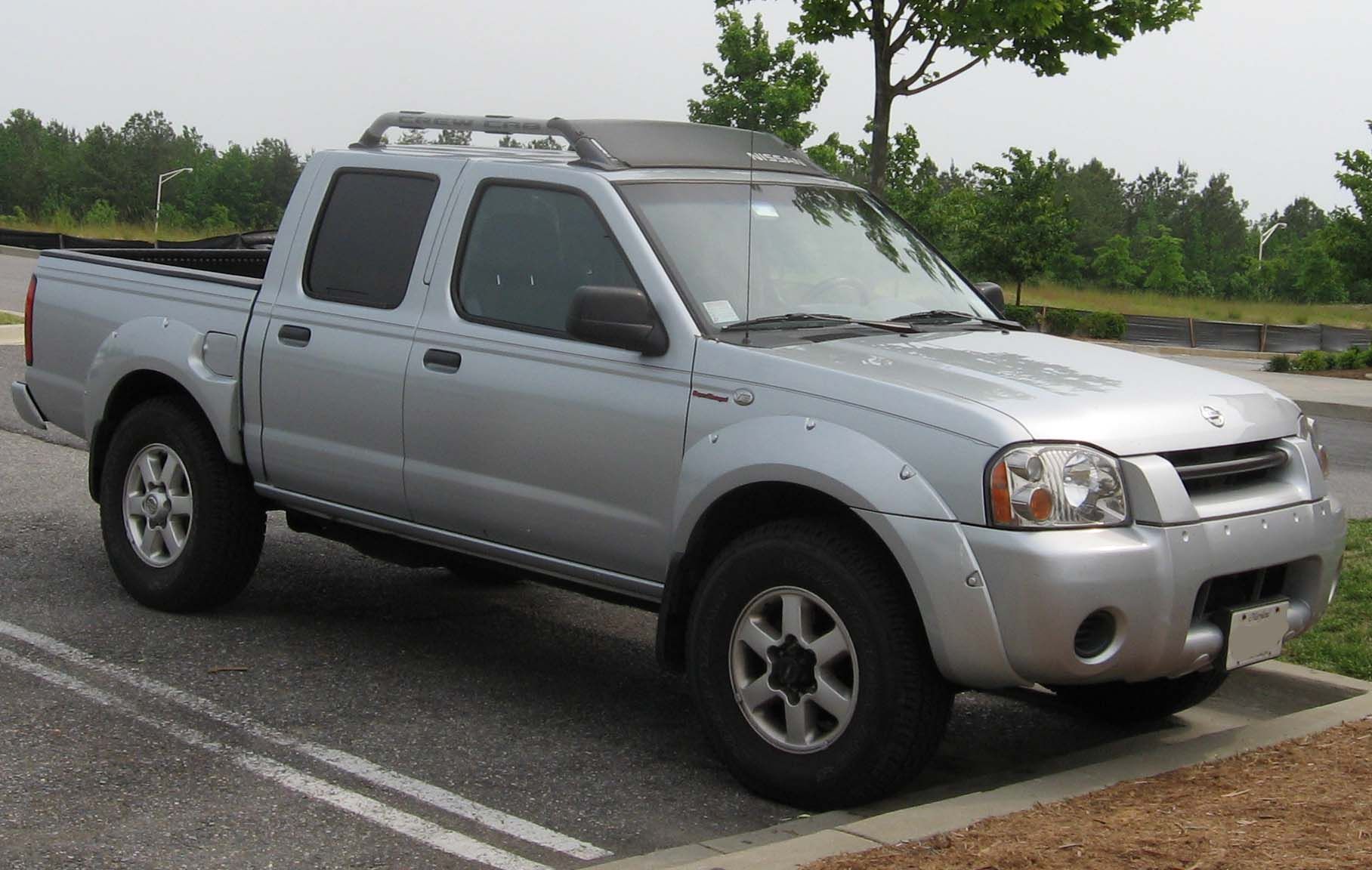
7. **Nissan Frontier**
The latest update to the Nissan Frontier pickup truck arrived with promises of stronger engines and more advanced technology, igniting hopes among buyers for a significant refresh. However, in many key markets, the reality has been that the update felt largely like “more of the same,” failing to deliver the substantial improvements expected. Many buyers anticipating enhanced power and modern features found themselves underwhelmed.
A common complaint revolves around the perceived cheapness of the cabin materials, which, according to reviews, left the Frontier overshadowed by older competitors that boast sharper and more sophisticated technology suites. This interior shortfall detracts significantly from the overall ownership experience, especially in a segment where comfort and advanced features are increasingly important.
While the off-road variants of the Frontier continue to satisfy dedicated enthusiasts, its suitability for everyday use appears to have diminished. The truck is no longer regarded as the standout model it once was in the broader pickup market. Consumer Reports further corroborates these concerns, giving the Frontier a reliability score of just 23 out of 100, one of the lowest in its class. Specific trouble spots include the transmission, electrical accessories, and body hardware, indicating areas prone to issues that could lead to costly repairs and frustration for owners.
Navigating the new car market can be a minefield of overhyped promises and underdelivered performance. As we continue our comprehensive review of the 2025 models, we turn our attention to additional vehicles that have fallen short of consumer expectations, revealing critical reliability concerns, practical shortcomings, and poor value propositions that every buyer should be aware of. Our goal remains to arm you with the facts, so you can make a choice that protects your investment and ensures satisfaction.
Car Model Information: 2015 Nissan Frontier PRO-4X
Categories: All set index articles, Articles with short description, Nissan vehicles, Set index articles on cars, Short description is different from Wikidata
Summary: The Nissan Frontier is a nameplate used on three different pickup truck models by Nissan:
Nissan Frontier (international), an alternative nameplate for the NP300/Navara on some markets
Nissan Frontier (North America), a rebadged NP300/Navara from 1997 to 2021, then became a separate model since 2021
Nissan Frontier Pro, a rebadged Dongfeng Z9 PHEV that will be available from 2025.
Get more information about: Nissan Frontier
Buying a high-performing used car >>>
Brand: Nissan Model: Frontier
Price: $17,865 Mileage: 154,112 mi.
Read more about: Beyond the Hype: The 15 Cars and Brands Owners Consistently Regret Buying
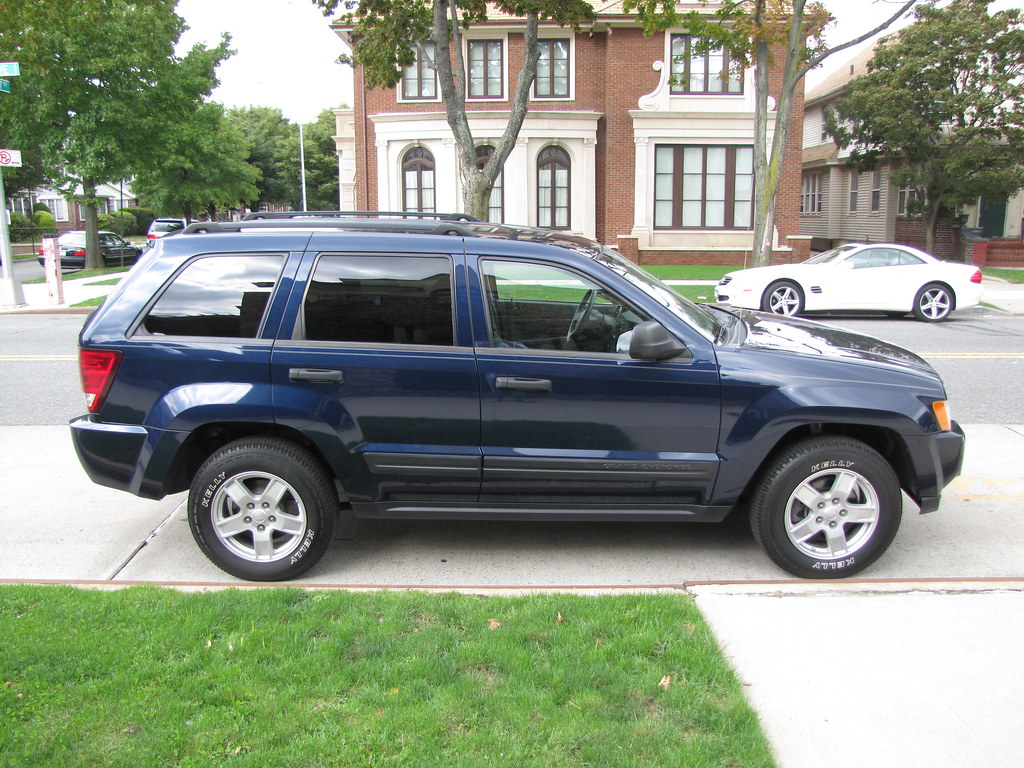
8. **Jeep Grand Cherokee L**
The Jeep Grand Cherokee L was positioned to elevate the standard for luxury big SUVs, building on the brand’s reputation. However, this extended version has reportedly failed to deliver a fully premium package that justifies its price tag, leaving many consumers with lingering doubts about its overall value. Critics specifically point out that its ride comfort lags behind that of its direct rivals, which is a significant drawback in the luxury SUV segment where a smooth, refined ride is paramount.
Furthermore, the vehicle’s fuel efficiency is considered modest, failing to offer competitive savings at the pump, especially for a vehicle of its size. The infotainment and driver-assist technologies, which should be seamless and intuitive in a premium offering, have been noted to exhibit glitches, detracting from the user experience. Despite an interior that appears upscale, independent analysis reveals that the actual build quality is lacking, and excessive road noise further hampers what should be a serene and luxurious cabin environment.
Consumer Reports provides a stark warning, assigning the Grand Cherokee L a reliability score of just 23 out of 100. This low score is attributed to numerous trouble spots, including the suspension, electrical accessories, drive system, in-car electronics, and body hardware. Owners have also reported issues with noises and leaks, contributing to a high total cost of ownership over five years, estimated at a significant $70,241. This figure includes substantial depreciation, fuel costs, and maintenance, making it a questionable investment for many families.
Car Model Information: 2023 Hyundai PALISADE Calligraphy
Name: Jeep Grand Cherokee
Manufacturer: Jeep
Production: 1992–present
ModelYears: 1993–present
Class: unbulleted list
BodyStyle: sport utility vehicle
Layout: unbulleted list
Chassis: Vehicle_frame#Uniframe
Categories: 2000s cars, 2010s cars, 2020s cars, All-wheel-drive vehicles, All Wikipedia articles written in American English
Summary: The Jeep Grand Cherokee is a range of mid-sized sport utility vehicles produced by American manufacturer Jeep. At its introduction, while most SUVs were still manufactured with body-on-frame construction, the Grand Cherokee has used a unibody chassis from the start.
Get more information about: Jeep Grand Cherokee
Buying a high-performing used car >>>
Brand: Jeep Model: Grand Cherokee L
Price: $32,135 Mileage: 69,109 mi.
Read more about: Buyer Beware: 12 Cars That Will Cost You a Fortune Before You Hit 50,000 Miles
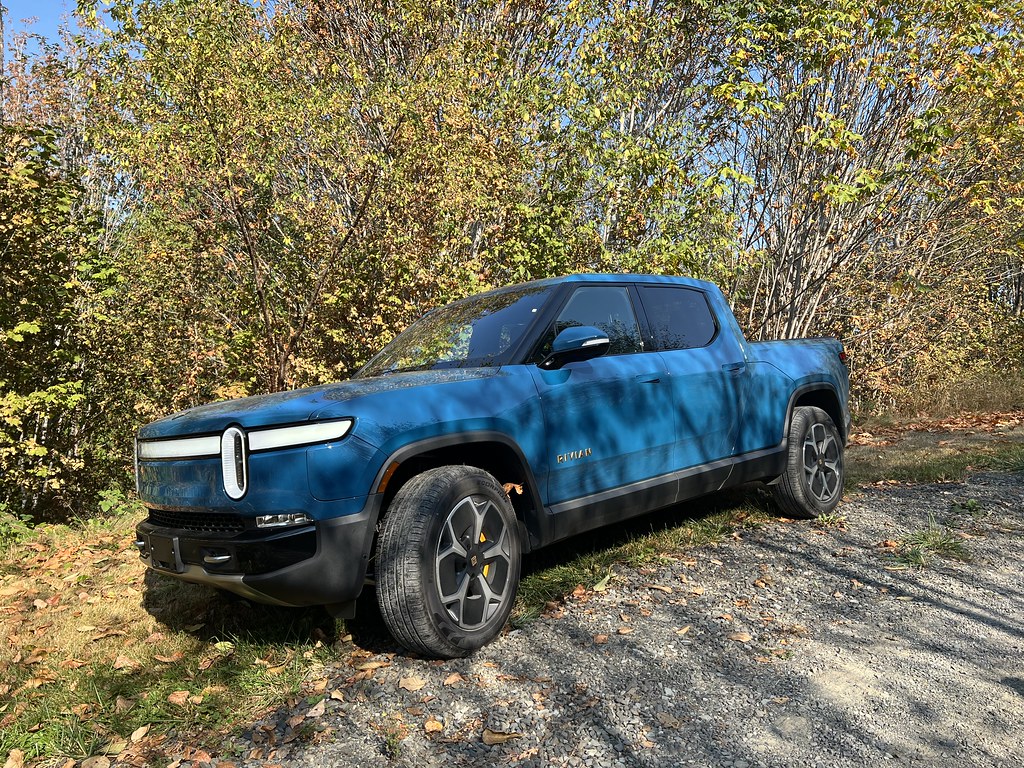
9. **Rivian R1T**
Rivian earned considerable initial acclaim for its innovative electric truck, the R1T, representing a bold new direction for electric vehicles. However, the 2025 R1T version has not entirely lived up to the lofty expectations, primarily disappointing some buyers with its real-world range and the performance of its charging infrastructure. Many drivers have reported that the proclaimed range, which is typically achieved under ideal conditions, falls significantly under normal use, creating range anxiety for owners.
Beyond the range concerns, early adopters have voiced frustration over persistent build quality issues, which are particularly concerning for a vehicle in this premium segment. Adding to these woes are reports of delayed service and parts availability in certain regions, which can be a major inconvenience for owners needing repairs or routine maintenance. These operational challenges detract from the overall ownership experience, especially for those expecting robust reliability from a pioneering electric vehicle.
In the J.D. Power 2025 Initial Quality Study, Rivian recorded 274 problems per 100 vehicles (PP100), placing it among the brands with the most issues, although it was included outside the official rankings. This finding corroborates Consumer Reports’ assessment, which gave the Rivian R1T a reliability score of just 22 out of 100. Key trouble spots identified include the drive system, climate system, body hardware, and various noises/leaks, underscoring areas where the R1T consistently underperforms.
Car Model Information: 2022 Rivian R1T Adventure Package
Name: Rivian R1T
Manufacturer: Rivian
Production: 2021–present
ModelYears: 2022–present
Assembly: Rivian Automotive,LLC
Designer: Jeff Hammoud
Class: Mid-size car,luxury car,pickup truck
BodyStyle: crew cab
Layout: unbulleted list
Related: Rivian R1S
Motor: Alternating current,Permanent magnet motor
Transmission: Single-speed
Battery: kWh,lithium-ion battery
ElectricRange: unbulleted list
Abbr: on
Charging: unbulleted list
Wheelbase: 135.9 in
Length: 217.1 in
Width: 81.8 in
Height: 75.7 in
Weight: cvt
Sp: us
Powerout: unbulleted list
Chassis: Body-on-frame
Categories: All Wikipedia articles written in American English, All articles with vague or ambiguous time, Articles with short description, Commons category link is on Wikidata, Electric trucks
Summary: The Rivian R1T is a battery electric mid-size light duty luxury pickup truck produced by the American company Rivian. The first production R1T was manufactured in Illinois on September 28, 2021, and was delivered to a customer. The official EPA range for the Rivian R1T (MY 2022–2024) ranges from 255–420 miles (410–676 km), depending on drivetrain, battery pack capacity and wheel size.
Get more information about: Rivian R1T
Buying a high-performing used car >>>
Brand: Rivian Model: R1T
Price: $58,745 Mileage: 24,463 mi.
Read more about: Beyond the Pavement: An In-Depth Look at 14 Off-Road Trucks, From Trailblazers to Trouble Spots
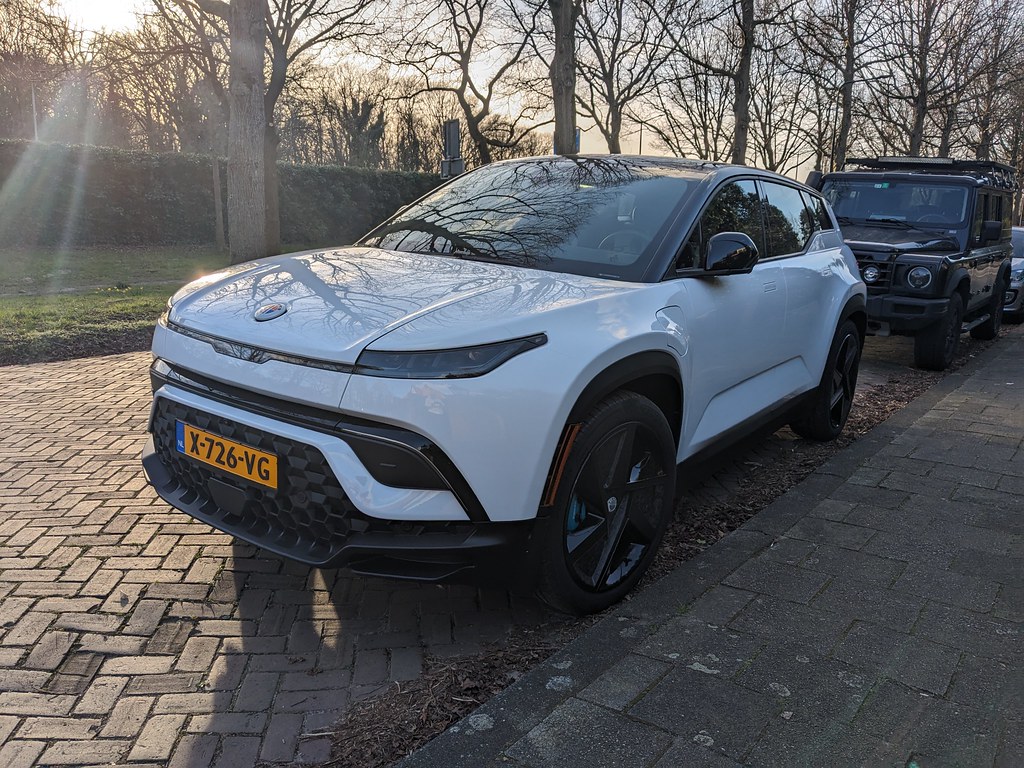
10. **Fisker Ocean**
The Fisker Ocean was introduced to the market with the promise of being a luxury electric SUV replete with an array of advanced features and cutting-edge technology. However, initial reviews and feedback from early owners have painted a concerning picture of a vehicle riddled with technical immaturities, casting a shadow over its luxury aspirations. The primary issues identified revolve around pervasive software bugs that disrupt various functionalities, making for a frustrating user experience.
Further criticisms include overly sensitive braking systems, which can lead to jarring stops and a less refined driving feel than expected from a premium SUV. Connectivity issues have also been a point of contention, hindering seamless integration with digital services and smart device pairing. Perhaps most damning is the perception that many of the vehicle’s touted features feel ‘half baked,’ suggesting they were rushed to market without sufficient development and testing, leading to an inconsistent and unreliable performance.
Buyers who anticipated a level of refinement commensurate with the Fisker Ocean’s price tag have instead encountered a plethora of irritating bugs and glitches. These consistent malfunctions severely degrade the ownership experience, turning what should be an exciting venture into electric luxury into a constant source of annoyance. For a vehicle competing in an increasingly sophisticated EV market, these fundamental flaws make the Fisker Ocean a challenging recommendation for discerning consumers.
Car Model Information: 2023 Fisker Ocean Ultra
Name: Fisker Ocean
Manufacturer: Fisker Inc
Production: Cite web
Assembly: Graz
Designer: Henrik Fisker
Class: Mid-size crossover SUV
BodyStyle: SUV
Layout: unbulleted list
Transmission: 1-speed EVT
Motor: 349 kW
Battery: 113.00 kWh
Abbr: on
ElectricRange: unbulleted list
Wheelbase: 2921 mm
Disp: flip 22″ Wheel
Length: 4774 mm
Width: 1982 mm
Height: unbulleted list
Sp: us
Weight: cvt
Categories: All Wikipedia articles written in British English, Articles with short description, CS1 maint: bot: original URL status unknown, Cars discontinued in 2024, Cars introduced in 2021
Summary: The Fisker Ocean is a discontinued battery electric mid-size crossover SUV that was manufactured and marketed by Fisker, which filed for bankruptcy protection in June 2024. Released in 2023, the Ocean was intended to be the first of three models in a lineup of mass-market all-electric vehicles designed by Henrik Fisker.
Get more information about: Fisker Ocean
Buying a high-performing used car >>>
Brand: Fisker Model: Ocean
Price: $17,998 Mileage: 6,826 mi.
Read more about: From Dream Machine to Daily Nightmare: 10 Vehicles That Tested Their Owners’ Patience
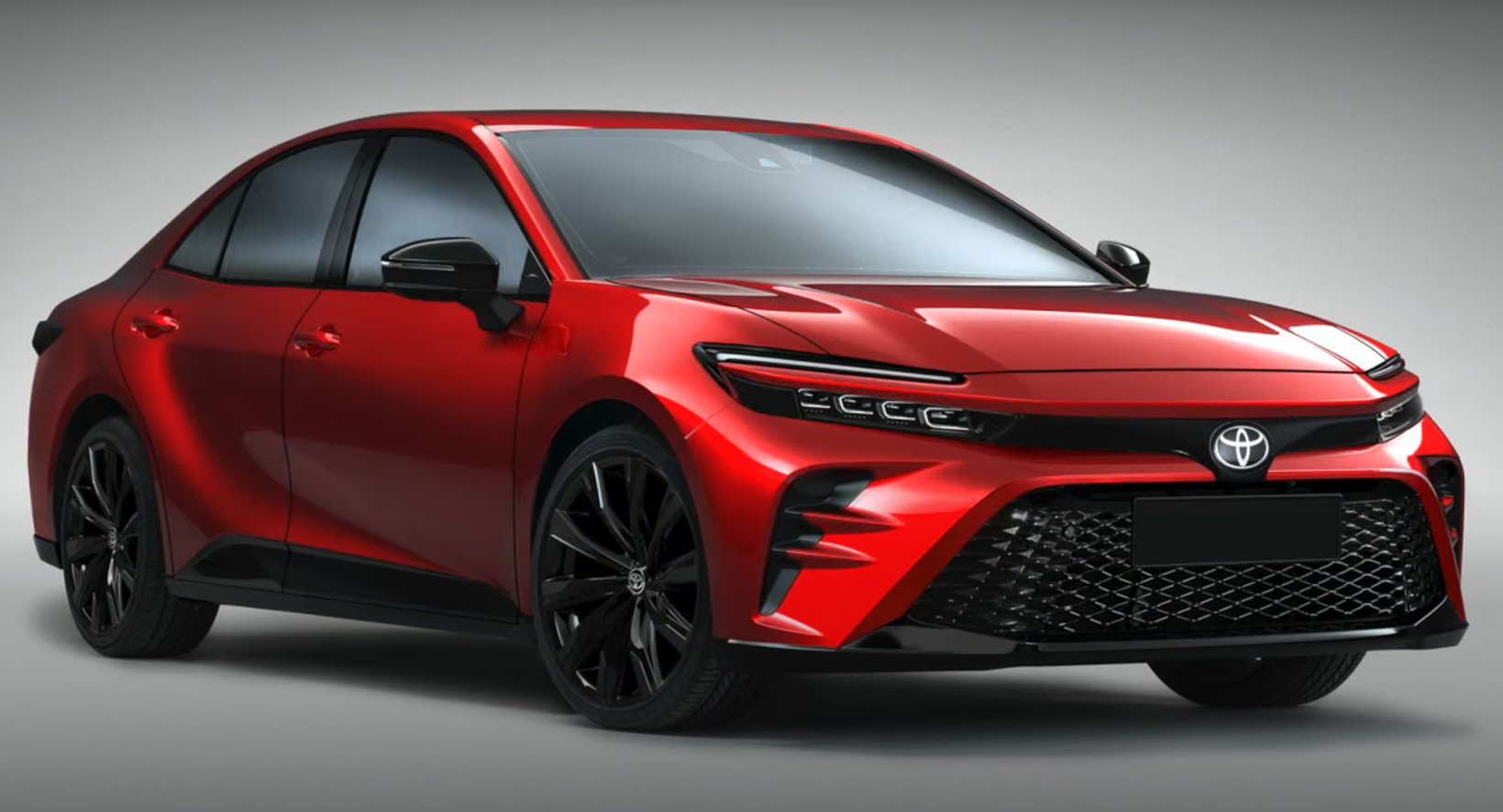
11. **Toyota (some of its new EV / Hybrid models)**
Toyota has long been celebrated for its cautious approach to innovation and its unwavering commitment to reliability, building a loyal customer base over decades. However, some of its recent 2025 hybrid or EV entries have unexpectedly drawn criticism, primarily for not delivering significant improvements over their outgoing models. This has led to disappointment among buyers who anticipated dramatic leaps in battery performance or electric range, particularly as rivals introduce more advanced electrification technologies.
Many long-time Toyota loyalists have found themselves frustrated by new mild hybrid systems that, while adding complexity to the powertrain, fail to offer noticeable gains in efficiency or smoothness in real-world driving conditions. This perceived lack of substantial enhancement means that consumers are investing in newer models without reaping the tangible benefits they expect from hybrid or electric innovations. The strategy of incremental upgrades, while typically reliable, appears to be falling short of evolving market expectations for transformative performance in electrified vehicles.
These particular Toyota models highlight a critical mismatch between consumer expectations for cutting-edge EV/hybrid advancements and the actual delivery. In a rapidly accelerating electric vehicle landscape, even a brand as reputable as Toyota can stumble when its new offerings do not push the boundaries sufficiently. Buyers seeking a forward-looking and dramatically improved electrified driving experience may find these models less compelling than expected.
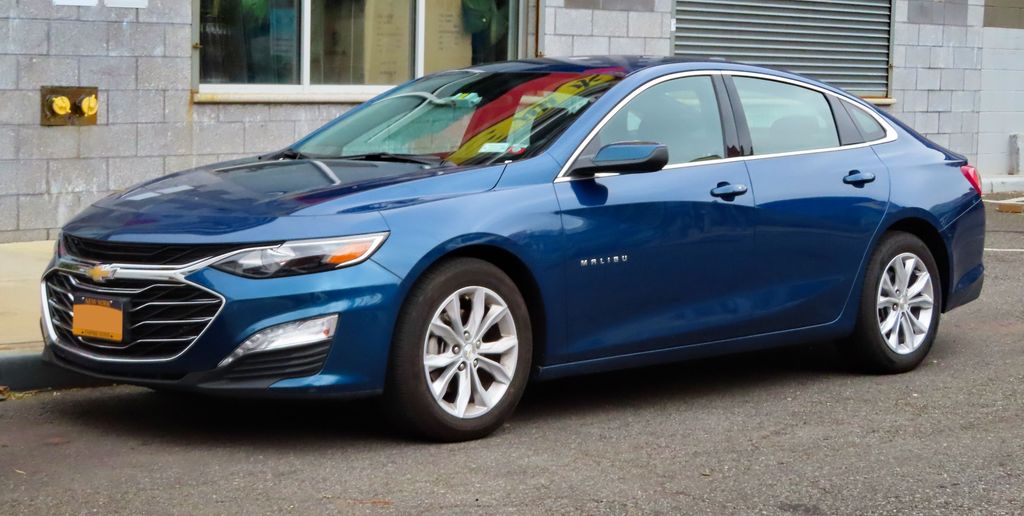
12. **Chevrolet Malibu**
Once a ubiquitous presence in the mid-size sedan segment, the 2025 Chevrolet Malibu has been described as feeling like a relic from a bygone era, struggling to keep pace with modern automotive trends. A major point of concern is its lack of contemporary powertrain options; it offers neither hybrid nor fully electric variants, which are becoming standard expectations in its class. This absence places it at a significant disadvantage against competitors that provide more fuel-efficient and environmentally conscious choices.
Beyond its powertrain limitations, the Malibu suffers from bland styling that fails to distinguish it in a crowded market, and it consistently falls short on interior technology. Its infotainment system is widely regarded as outdated, lacking the intuitive interface and advanced features found in newer rivals. Coupled with a dull driving experience, these factors make the Malibu a less engaging and less competitive option.
The overall package of the 2025 Malibu offers nothing new or compelling, especially when pitted against more modern sedans like the Hyundai Sonata and Toyota Camry Hybrid. Its subpar fuel economy further detracts from its appeal, contributing to higher running costs. For consumers seeking an up-to-date, technologically advanced, and efficient mid-size sedan, the Malibu presents a disappointing choice that struggles to justify its place in the current market.
Car Model Information: 2022 Chevrolet Malibu FWD LT
Name: Chevrolet Malibu
Manufacturer: Chevrolet
ModelYears: 1964–1983,1997–2025
Class: Mid-size car
Layout: Front-engine, rear-wheel-drive layout
Predecessor: Chevrolet Chevelle
Successor: Chevrolet Celebrity
Caption: Ninth generation Chevrolet Malibu
Categories: 1970s cars, 1980s cars, 1990s cars, 2000s cars, 2010s cars
Summary: The Chevrolet Malibu is a mid-size car that was manufactured and marketed by Chevrolet from 1964 to 1983 and from 1997 to 2025. The Malibu began as a trim-level of the Chevrolet Chevelle, becoming its own model line in 1978. Originally a rear-wheel-drive intermediate, GM revived the Malibu nameplate as a front-wheel-drive car in 1997.
Named after the coastal community of Malibu, California, the Malibu has been marketed primarily in North America, with the eighth generation introduced globally. Malibu production in the US ended in November 2024, as the Fairfax plant is being retooled for the upcoming second-generation Chevrolet Bolt. The Malibu is now the last sedan to have been sold by Chevrolet in the US.
Get more information about: Chevrolet Malibu
Buying a high-performing used car >>>
Brand: Chevrolet Model: Malibu
Price: $17,961 Mileage: 51,546 mi.
Read more about: America’s Automotive Hall of Shame: Unforgettable Engineering Blunders and the Cars We Love to Lament

13. **Mitsubishi Mirage**
The Mitsubishi Mirage continues to hold its position as one of the cheapest new cars available on the market, a factor that undeniably appeals to budget-conscious buyers. However, this affordability comes with substantial compromises, making it a consistently disappointing choice for those who prioritize more than just a low price tag. The most glaring issue is its severely underpowered engine, which results in weak acceleration and a generally sluggish performance, making even routine driving a laborious experience.
The interior of the Mirage feels notably dated, often described as a ‘2010 throwback,’ utilizing hard plastics and a utilitarian design that lacks refinement and modern aesthetics. This absence of contemporary design and quality materials significantly detracts from the cabin experience. Furthermore, the vehicle offers very little in terms of advanced safety features or passenger comfort, falling far short of the benchmarks set by its competitors, even within the budget segment.
Consumer Reports notes that the 2024 Mitsubishi Mirage “might leave you wondering if it’s all a dream, and not the good kind.” Its basic design does not help it stand out, and inside, it’s the bare minimum. The unrefined ride quality and sparse safety features underscore the practical shortcomings, making the Mirage a less than ideal choice for drivers seeking a car that offers a more balanced blend of cost, performance, and modern amenities.
Car Model Information: 2023 Mitsubishi Mirage Ralliart
Name: Mitsubishi Mirage
Caption: Mitsubishi Mirage (sixth generation)
Manufacturer: Mitsubishi Motors
Production: 1978–2003,2012–present
Class: Subcompact car
Layout: Front-engine, front-wheel-drive
Predecessor: Mitsubishi Lancer (A70)
Successor: Mitsubishi Lancer#Eighth generation (2000)
Categories: 1980s cars, 1990s cars, 2000s cars, 2010s cars, 2020s cars
Summary: The Mitsubishi Mirage is a range of cars produced by the Japanese manufacturer Mitsubishi from 1978 until 2003 and again since. The hatchback models produced between 1978 and 2003 were classified as subcompact cars, while the sedan and station wagon models, marketed prominently as the Mitsubishi Lancer, were the compact offerings. The liftback introduced in 1988 complemented the sedan as an additional compact offering, and the coupé of 1991 fitted in with the subcompact range. The current Mirage model is a subcompact hatchback and sedan and it replaces the Mitsubishi Colt sold between 2002 and 2012.
Get more information about: Mitsubishi Mirage
Buying a high-performing used car >>>
Brand: Mitsubishi Model: Mirage
Price: $16,980 Mileage: 11,832 mi.
Read more about: Road Warriors: 15 Compact Cars That Will Conquer 260,000 Kilometers Without a Hiccup

14. **Chrysler 300**
The Chrysler 300, once a distinctive presence with its bold, muscular styling, offered a compelling alternative to traditional full-size sedans. However, the 2025 model has been criticized for feeling stale and outdated, having received minimal updates that fail to rejuvenate its aging platform. This lack of significant evolution means it struggles to compete effectively against newer vehicles that have embraced modern design philosophies and technological advancements.
One of the primary drawbacks is its clunky ride, which lacks the sophistication and smoothness expected in a contemporary full-size sedan, contributing to a less comfortable driving experience. The vehicle’s fuel efficiency also significantly lags behind that of its newer competitors, translating into higher running costs for owners in an era where efficiency is increasingly prioritized. Paired with old-school tech and sluggish handling, the 300 feels as though it has simply overstayed its welcome in a rapidly evolving market.
The J.D. Power 2025 Initial Quality Study listed Chrysler with 213 problems per 100 vehicles (PP100), indicating a pattern of quality issues that prospective buyers should heed. For consumers seeking a modern, efficient, and technologically advanced full-size sedan, the Chrysler 300 presents a disappointing option that fails to offer compelling reasons for purchase beyond its nostalgic appeal.
Car Model Information: 2020 Chrysler 300 Touring
Name: Chrysler 300
Aka: Lancia Thema
Manufacturer: Chrysler (automotive brand)
Production: February 1, 2004– December 2023
ModelYears: 2005–2023
Class: Executive car
Layout: Front-engine, rear-wheel-drive layout,automobile layout
Predecessor: Chrysler 300M,Chrysler Concorde,Chrysler Intrepid
Categories: 2010s cars, All articles with dead external links, All articles with unsourced statements, Articles with dead external links from June 2025, Articles with short description
Summary: The Chrysler 300 is a full-size car manufactured and marketed by Stellantis North America and its predecessor companies. It was available as a four-door sedan and station wagon in its first generation (model years 2005–2010), and solely as a four-door sedan in its second generation (model years 2011–2023).
The second generation 300 was marketed as the Chrysler 300C in the United Kingdom and Ireland and as the Lancia Thema in the remainder of Europe.
Get more information about: Chrysler 300
Buying a high-performing used car >>>
Brand: Chrysler Model: 300
Price: $20,628 Mileage: 31,223 mi.
Read more about: America’s Automotive Hall of Shame: Unforgettable Engineering Blunders and the Cars We Love to Lament
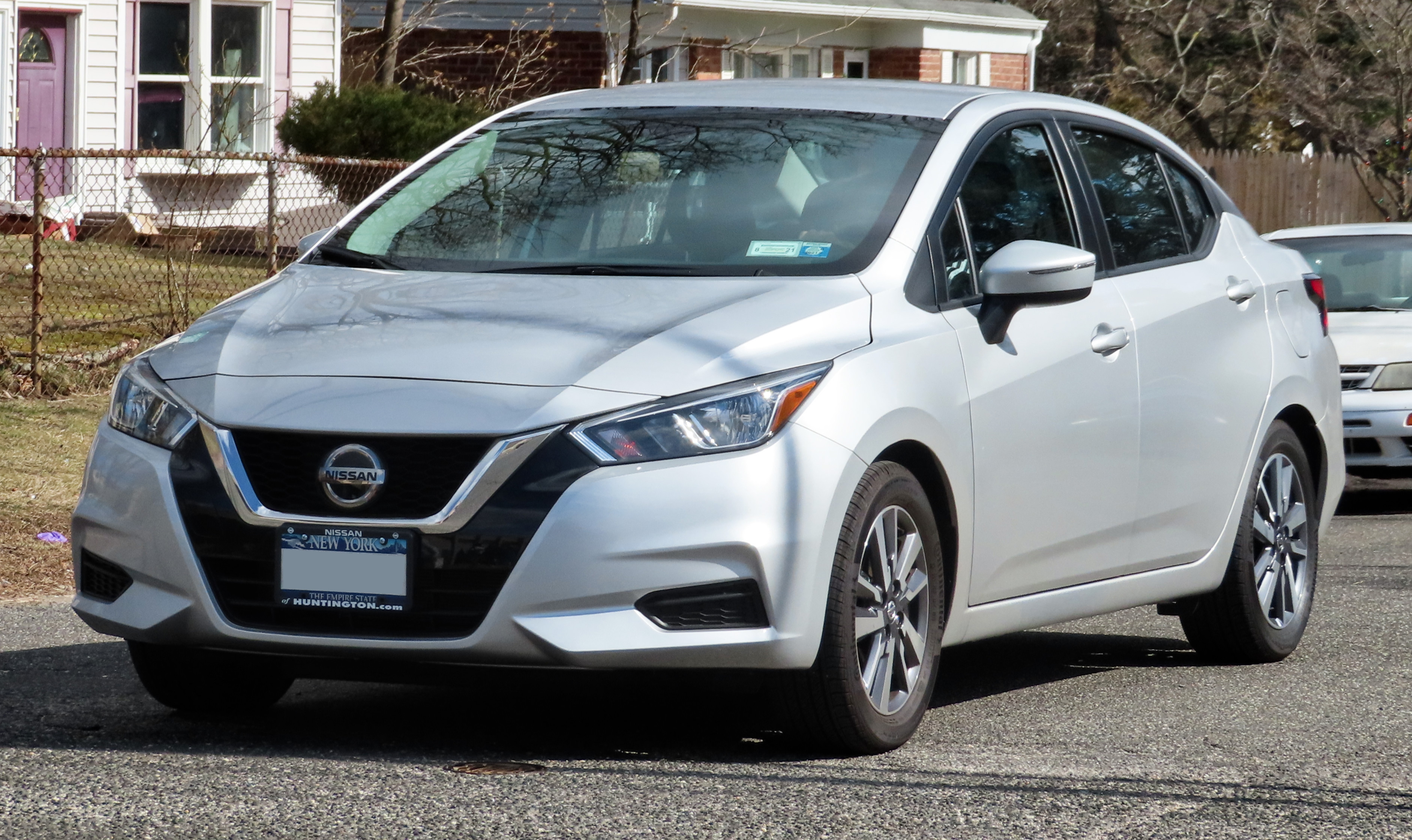
15. **Nissan Versa**
The 2025 Nissan Versa undeniably appeals to a specific segment of the market with its notably low starting price, making it an accessible option for budget-conscious buyers. However, this affordability comes at a significant cost, as the Versa sacrifices too much in terms of performance and overall refinement. In an automotive landscape where even entry-level cars are expected to offer modern technology and reasonable fuel efficiency, the Versa lags noticeably behind its competitors.
The vehicle is hampered by a sluggish powertrain, which delivers unimpressive engine performance and contributes to a less engaging driving experience. Its cabin is frequently described as bare-bones, lacking both the comfort and contemporary features that drivers increasingly expect. Furthermore, the noisy cabin detracts from the overall driving experience, making longer journeys less pleasant.
Consumer Reports highlights that while the 2025 Nissan Versa might appeal with its affordability, it sacrifices much in the process. The design is basic, blending into the background without leaving an impression. Inside, the space is tight, and comfort is not its priority. Despite decent fuel efficiency, it’s not enough to make it a standout feature. For those seeking an engaging and stylish ride with modern amenities, the Versa might not be the best choice, underscoring that its low price cannot entirely compensate for its many shortcomings.
Car Model Information: 2021 Nissan Versa 1.6 S
Categories: All set index articles, Articles with short description, CS1 Mexican Spanish-language sources (es-mx), CS1 Portuguese-language sources (pt), CS1 Spanish-language sources (es)
Summary: Nissan Versa is an automobile nameplate used by the Japanese manufacturer Nissan in the Americas for the following models:
According to a Nissan press release in 2008, “versa” is short for “versatile space” meant to imply the spaciousness of the interior and configurable cargo arrangements.
Get more information about: Nissan Versa
Buying a high-performing used car >>>
Brand: Nissan Model: Versa
Price: $13,741 Mileage: 42,593 mi.
Read more about: Buyer Beware: 14 Cars Notorious for Breaking Down Prematurely, Especially After 100,000 Miles
The journey through the 2025 automotive landscape reveals a clear truth: not every new model lives up to its initial fanfare. Our in-depth analysis, supported by reliability data and expert evaluations, underscores that some vehicles, despite their marketing gloss, harbor significant flaws that can lead to costly regrets. From build quality issues and disappointing performance to outdated technology and poor value, the cars highlighted in this guide represent pitfalls that smart consumers should proactively avoid. Armed with these critical insights, you are now better prepared to navigate the complexities of the new car market, ensuring your next vehicle purchase is a source of satisfaction, not frustration. Before committing to a substantial investment, remember that thorough research and an understanding of potential hidden costs are your most powerful tools in making an informed decision.

